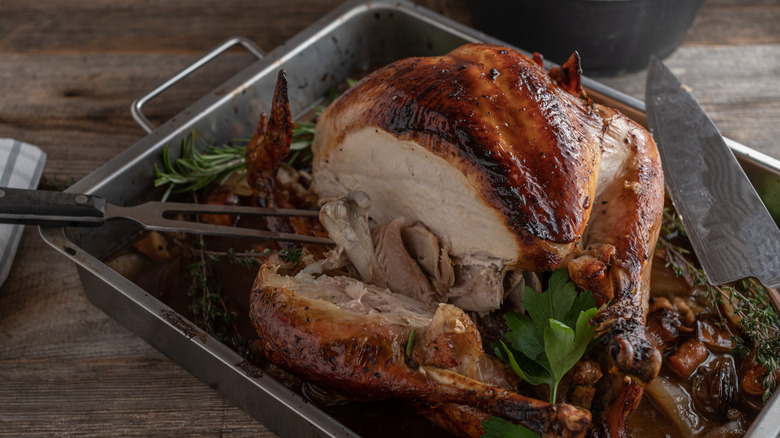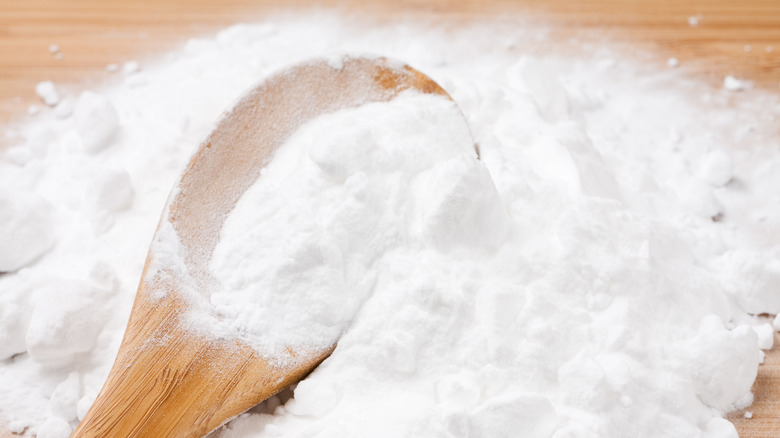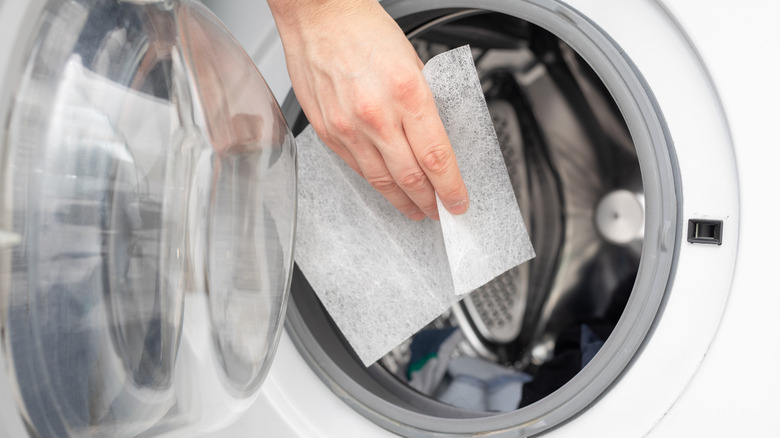How To Clean A Broiler Pan And Remove The Grime
If you've never cooked with a broiler pan, you don't know what you're missing. Broiler pans are essentially used in ovens as inverse grills — you put vegetables, fish, or meat on it and let the heat from your oven's broiler cook the food from above while the metal of the pan conducts heat into the food from below. They're especially useful for Thanksgiving fare. The only disadvantage is that broiler pans have a tendency to get real gross real fast. Because they're exposed to a lot of different greasy components (especially if you're cooking meat on them) on high heat, they have a tendency to collect hardened grime a lot more than most cooking tools. So, how do you deal with that issue? There are two main solutions; one involves baking soda, and the other makes use of dryer sheets. That's right — the things you use to keep your laundry fresh and soft can also be used to clean culinary appliances.
Whichever method you use, broiler pans can be a great addition to the kitchen — as long as you make sure to clean them between uses. (That bit of extra work will be worth it when you see the results.)
Baking soda, the universal cleaner, comes to the rescue again
There's no shock that baking soda shows up in the first cleaning method here; it's the universal ingredient for difficult cleaning endeavors, from cleaning stubborn grills to cleaning and restoring brass from tarnish to pretty much anything else you can name.
The baking soda method for broiler pans differs slightly from its use with something like grills, though. You're usually making a paste out of the stuff by combining it with dish soap or vinegar, but with roasting pans, you're sprinkling it evenly all over the available surface area. From there, you spray it lightly with water to moisten it, then bring in paper towels over everything to keep them wet.
From here, the cleaning method looks a lot like other baking soda processes — you let the mixture sit for half an hour until it's dried out, then take a spatula and carefully scrape it off. If all went well, all those little hardened food bits will come right off. Use a sponge to wipe it down from there to make sure all of the residue has been removed.
The chemicals in dryer sheets make them a surprisingly effective cleaning tool
The dryer sheet method, by contrast, is a very different process. You start by soaking the broiler pan in a mixture of soapy water, either filling the pan itself with hot water if it's deep enough to hold it, or submerging it in the kitchen sink if it's too shallow for that. Then, you take the dryer sheets and submerge them in the water on top of the pan.
You'll want to leave the result to soak for at least an hour, potentially longer if you're dealing with a particularly stubborn mess.
When it's ready, pull the sheets and dump the water. The sheets will have loosened the baked-on grime to the point where you can remove whatever remains with a sponge. The reason is chemistry — the release of the conditioning agents in the sheets into the water as they soak has the effect of breaking down the bonds holding those hardened bits together.


